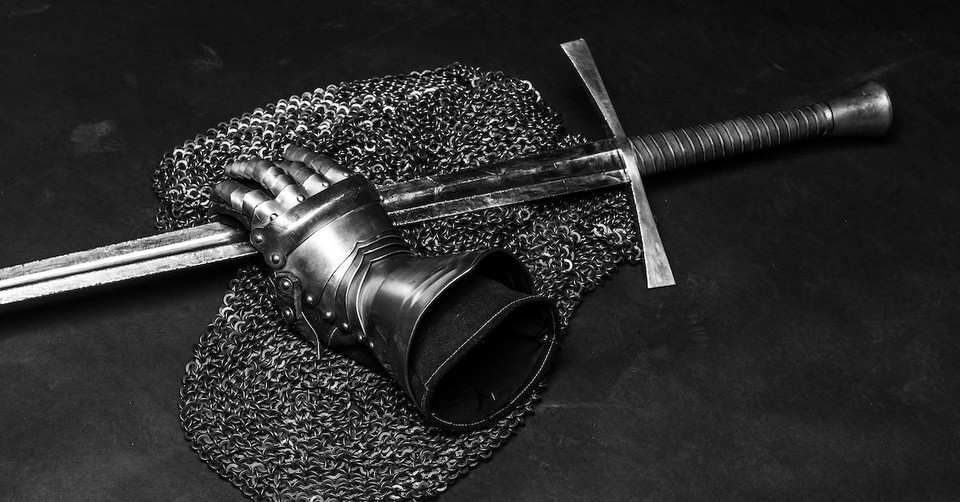How Should I Teach My Kids about the Armor of God?

Some parts of the Bible are hard to teach to children. Among other things, the Bible contains complex theological ideas, intricate details of Israel’s history, and obscure sacrificial rituals. So it is not surprising that with our children, we often gravitate toward the Bible’s best-known stories and images. The youngest child can quickly grasp the basic significance of stories like David and Goliath (1 Sam. 17), where God protected the young shepherd boy against his larger opponent; likewise, the parables of the good shepherd who left ninety-nine sheep on the hillside in order to venture after the single lost sheep (Luke 15:4-7) puts concrete clothing on the abstract idea of God’s individual care and concern for people who have wandered far from him.
In those terms, the armor of God in Ephesians 6:10-20 should be attractive as a passage to teach to our children: using a series of metaphors, Paul takes abstract concepts, such as faith, hope, and righteousness and he identifies them with various specific pieces of military equipment. But how exactly should we teach this passage to our children?
Prepare them for the battle
It would be easy for our children to get the impression that the armor of God is a collection of superpowers, which are primarily needed by Christian superheroes. Thor has his hammer and Captain America has his shield; so too, those who are going to be “super Christians” might need all of this special gear but ordinary Christians probably don’t. However, the armor of God in Ephesians is not designed to equip elite Christian soldiers, while other (less committed) Christians serve as civilians. Rather, it is given to enable all of us to be prepared Christian soldiers, in an often hostile world.
One way to communicate that concept to children would be to relate the armor to safety equipment rather than superpowers. Most kids don’t regularly wear armor, but they do know what it is to have to wear safety equipment, even if they don’t want to. They wear helmets to ride their bikes, padding for skateboarding, mouthguards for football – and they understand the temptation not to bother with these things: bike helmets can be hot; pads can be constricting; mouthguards uncomfortable. But if they understand the dangers involved in their sport, they will know why it is vital for them to wear the safety gear – all the time, every time.
Part of what we want to communicate, therefore, is a proper sense of the dangers of this world in which we live. We need to understand the reality and power of our enemy, Satan. He goes prowling around like a roaring lion, seeking people to devour (1 Pet. 5:8). No one would dream of entering a lion’s den without the proper safety equipment! Yet Peter wants us to remember that this world is, in a sense, a lion’s den. In Ephesians 6:12, he calls the context of our lives “this present darkness”. Yet at the same time, our God has a long history of keeping his people safe in lion’s dens (see Dan. 6). Satan is a leashed lion. He has no power to assault us or tempt us beyond that given to him by God, as the story of Job makes clear. Since Satan is ultimately under God’s control, we need not be terrified of him – just motivated to walk through life properly dressed.
Explain the equipment accurately
Unfortunately, not all of the imagery in Ephesians 6 is easy to understand, since it comes to us in the form of metaphors. A quick survey of internet resources shows that it is not uncommon for people to import meaning from the wrong cultural contexts into their interpretation of the metaphor. For example, I have seen lessons derived from features that belonged more to medieval helmets than ancient helmets. That doesn’t even include more blatant inaccuracies, such as the dress-up outfit I saw for sale online that included “The shin guards of the preparation of the gospel of peace” (seriously!). In fact, each of the pieces of armor Paul mentions has a background in the Old Testament, so be prepared to do some digging through the Bible to find where Paul got these ideas from, recognizing that these Old Testament contexts shape the proper understanding of Paul’s meaning. Good commentaries and study Bibles can help here.
Apply the message in a gospel-centered way
It is easy to make lessons about the Christian armor moralistic: God has given you all this equipment. Now your success depends entirely on how well you put it on and how constantly you wear it. If you follow these simple instructions, you will live a victorious Christian life, but if you don’t, then you will be a loser Christian.
This, of course, entirely misses what Paul said earlier in Ephesians about our salvation being by grace through faith, God’s gift and work from beginning to end (see Eph. 2). This reality becomes clearer when we study the Old Testament background from which Paul draws his inspiration. For example, the “breastplate of righteousness” and the “helmet of salvation” (Eph. 6:14, 17) are both drawn directly from Isaiah 59:17. God is the one who “put on righteousness as a breastplate, and a helmet of salvation on his head; he put on garments of vengeance for clothing, and wrapped himself in zeal as a cloak”. This was not merely so that he could deal with the enemies of Judah in Isaiah’s day, such as Babylon. Rather, the prophet describes the divine warrior coming to deal with a greater problem – his people’s sin. God’s people have no righteousness of their own to present to God; even their best righteousness is nothing more than filthy garments (Isa. 64:6). They deserve nothing more than condemnation and fearful judgment from God. But Isaiah declared that the Divine Warrior would not come as a wrathful judge; instead, he would arm himself and come as their Redeemer to bring them salvation.
It is Christ’s wearing of our armor in his climactic battle with Satan that makes us safe as the beloved children of God. It would not be good news if God were to say to us, “Put on the armor of God so you will be saved.” Rather, the gospel is that Jesus has won the battle for us and now calls us out of gratitude to don our safety equipment, dig in our toes and heels and, as the Spirit enables us, to fight with all our might. Sometimes we will stand, for the Spirit will hold us up; sometimes we will falter and fail, as the Spirit turns us over to ourselves to show us our own weakness. But God will never let his children go, or permit them to be devoured by the evil one. When the fog of war finally clears on the last day, all those who are Christ’s by faith will stand by his grace. None of the credit will be due to us but all of it to Jesus, our divine Champion. If our children know these things, they will indeed be equipped for life in this dark and dangerous world.

Photo credit: ©GettyImages/Fyletto
Originally published August 19, 2019.







